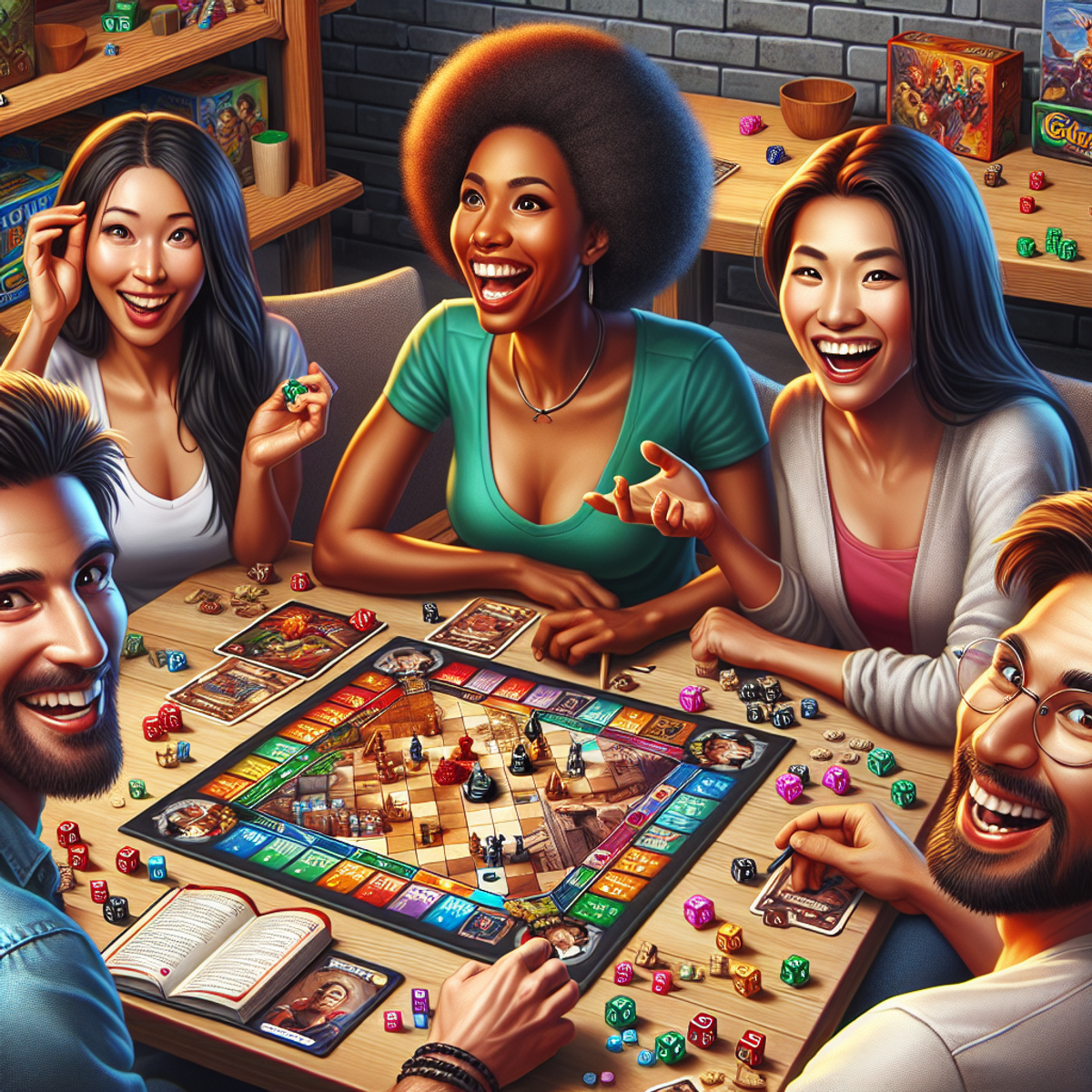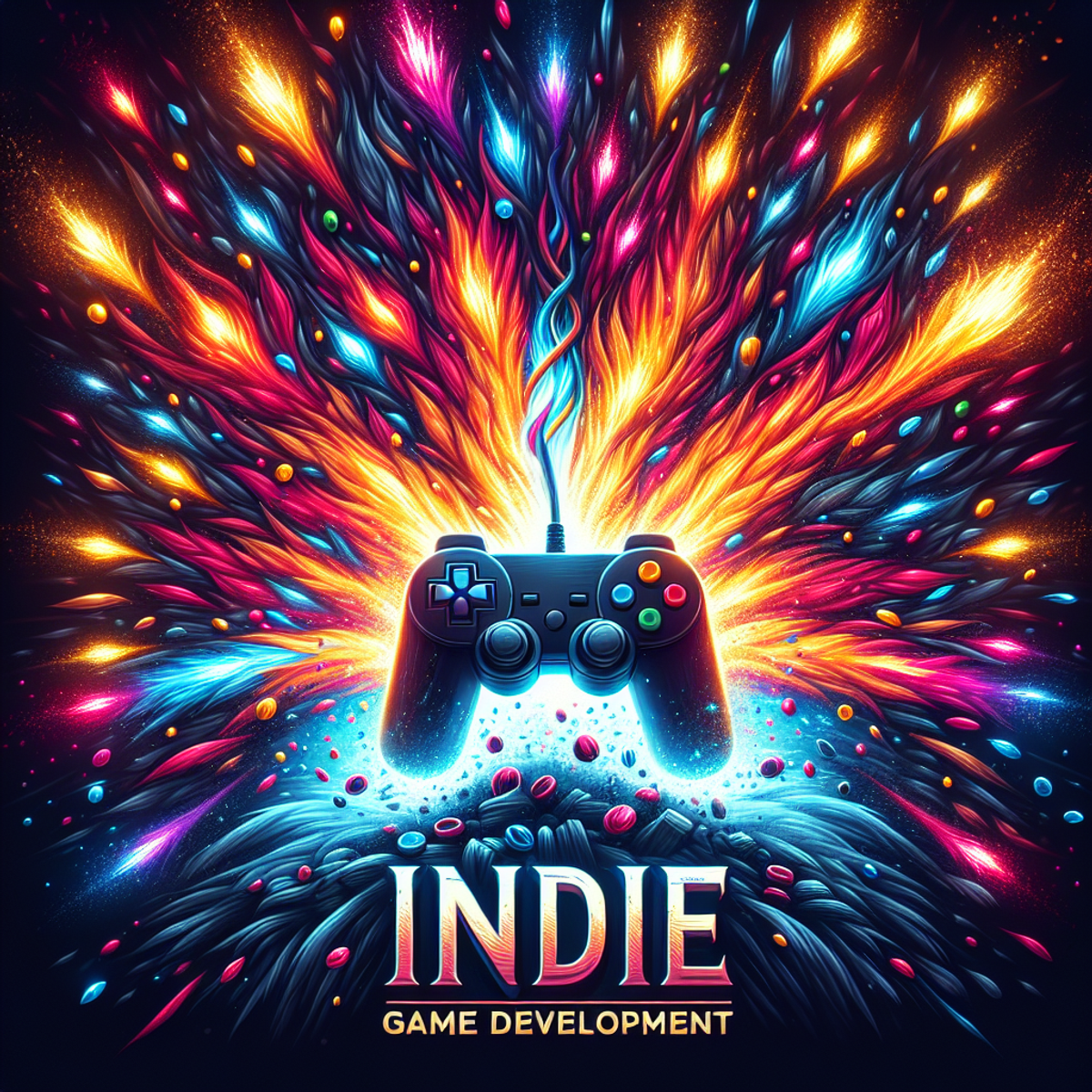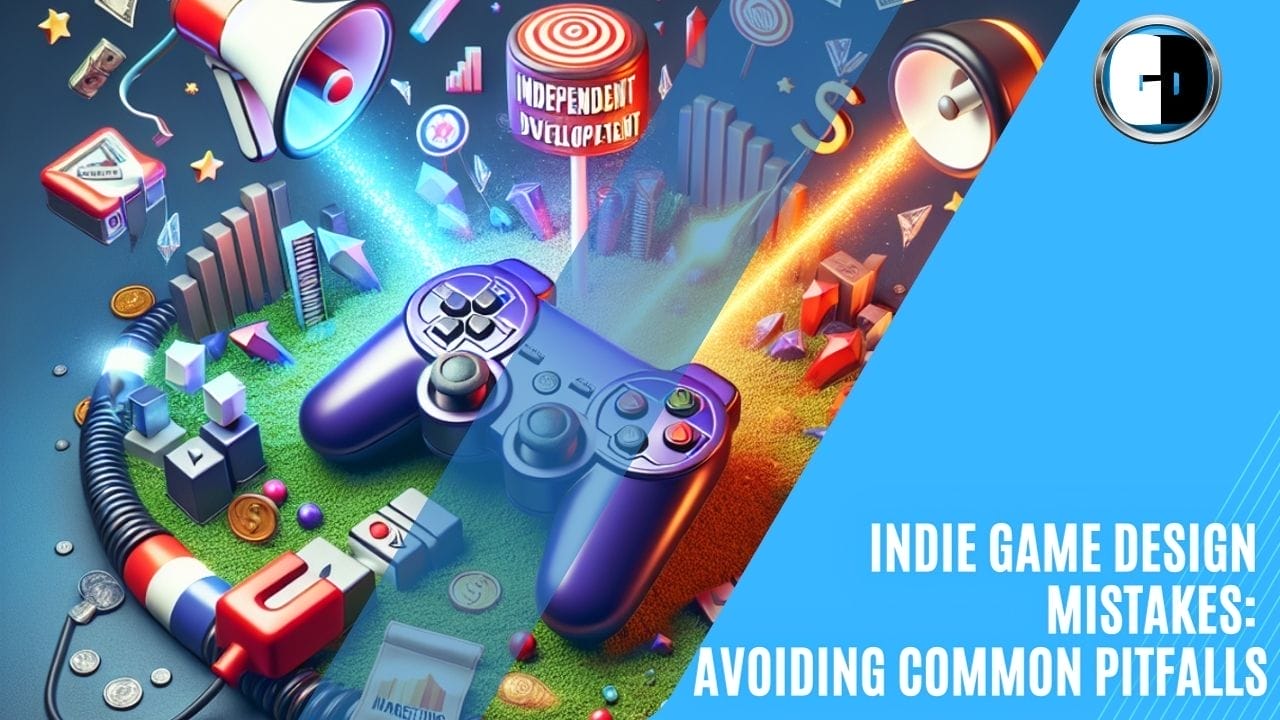Introduction to Indie Game Design Mistakes
Indie game design is all about creating games independently, often with a small team or even solo. It’s a playground for creativity, innovation, and sometimes sheer madness. Think of it as the Wild West of the gaming world, where anything goes and dreams can either soar or crash spectacularly.
Why do indie game developers often stumble into common pitfalls? Many are fueled by passion and ambition but may lack experience or resources. This combination can lead to some avoidable yet frequent mistakes. They might be wearing too many hats—designer, programmer, marketer—and juggling all these roles can make it easy to slip up.
It’s like trying to bake a cake while simultaneously knitting a sweater.
For those looking to dive deeper into marketing their games, there’s a handy guide on promoting your game on Twitter available. Twitter has proven to be an effective platform for reaching potential players and building a community around your game. Additionally, understanding overall promotional strategies is crucial for success in the competitive indie scene.
By learning from these mistakes, aspiring game designers can navigate the indie scene more effectively and turn their creative visions into successful realities.
Common Mistakes in Indie Game Design

1. Creating Games That Are Too Big and Complex
Indie game design is an exciting, yet challenging endeavor. One of the most common mistakes that indie developers make is biting off more than they can chew by creating games that are too big and complex.
Challenges of Finishing Large and Complex Games
- Time Management: Developing a large, intricate game requires a significant investment of time. Indie developers, often working solo or in small teams, can easily find themselves overwhelmed by the sheer amount of work required.
- Resource Constraints: Unlike big studios, indie developers usually have limited resources. This includes funding, manpower, and technical tools.
- Feature Creep: It’s tempting to keep adding new features and mechanics to make the game “better”. However, this leads to an ever-expanding scope that becomes difficult to manage and complete.
- Quality Control: Ensuring that every element of a large game meets quality standards is tough. Bugs, inconsistent art styles, and unpolished gameplay can mar the final product.
Examples of Games That Failed Due to Overambitious Scope
- “Ant Simulator”: Initially hyped for its unique concept and promising mechanics, “Ant Simulator” met its demise due to financial mismanagement and the overwhelming scope of the project. The creators couldn’t keep up with their ambitious plans.
- “The Stomping Land”: This dinosaur survival game saw early success on Kickstarter but faltered as development dragged on with no end in sight. Its complex systems and vast world became unmanageable for the small team.
For those looking for a feasible pathway into game development without getting lost in complexity, several engines like Unreal Engine and Unity offer various resources and toolkits to simplify the process. However, if you prefer a more lightweight option, you might want to consider how to make a 2D platformer in Godot, which provides a user-friendly environment for game development.
Indie developers should aim to create manageable projects with clear, concise goals. A smaller scope does not equate to lesser quality; it often results in a more polished and enjoyable game. If you’re interested in learning more about the creative process behind indie game design, this article on breaking the mold might provide valuable insights.
2. Falling into a “Loop of Restarting”

One of the most common mistakes in indie game design is falling into what I like to call the “loop of restarting.” This concept revolves around the incessant urge to continually tweak and change earlier work, leading to a never-ending cycle that can derail your entire development process.
The Concept of Constantly Making Changes
Imagine you’re sculpting a beautiful statue. You perfect the head, move on to the torso, but then decide the head could use a bit more chiseling. So you go back. Then, you fix the arms, but wait—those legs could be better! Soon, you’re stuck in an endless loop where nothing ever gets finished because there’s always something to improve.
This is exactly what happens when indie game developers keep revisiting earlier stages of their projects. It’s easy to fall into this trap when you’re passionate about your project and strive for perfection. However, this constant iteration not only slows down progress but can also drain your creative energy.
Negative Impact on Development Process and Timeline
The ramifications of this loop are extensive:
- Delayed Timelines: Every time you restart or make significant changes, you push back your completion date. For example, if initially planned to finish your game in six months, constant restarts can stretch it to a year or more.
- Resource Drain: Indie developers often work with limited resources—both financial and manpower. Each restart means more money spent without making actual progress.
- Burnout: Reworking the same elements over and over can lead to creative fatigue and burnout, killing motivation and potentially leading to abandoning the project altogether.
Case in point: Imagine spending weeks perfecting a game’s combat system only to revisit it multiple times. Instead of moving forward with level design or story elements, you’re perpetually stuck in combat revisions.
This loop isn’t just theoretical; many indie games have faced delays or even cancellations due to this very issue. Knowing when to quit making additional changes is crucial for staying on track.
For those who find themselves caught up in this cycle, here’s a good read on knowing when to quit making a game that offers valuable insights.
Breaking free from this loop requires discipline and setting clear milestones. A helpful tip is creating a “freeze period” where no changes are allowed until certain parts of the game are fully completed.
Indie game design mistakes like these are all too familiar but recognizing them early on can help streamline your development process significantly. Avoiding these pitfalls ensures that your dream project doesn’t turn into an endless nightmare of revisions and restarts.
To further enhance your productivity during development, you may find this resource useful as it provides additional tips and insights from experienced developers.
3. Lack of Playtesting

Playtesting—it’s not just a buzzword; it’s your best friend in the indie game design world. Skipping this crucial step is one of the most common mistakes developers make, and it can lead to a plethora of issues that could easily be avoided.
Why Playtesting is Essential
1. Identifying Bugs and Glitches
No game is perfect from the get-go. Playtesting allows you to spot those pesky bugs and glitches before your players do. Imagine launching your game only to find out it crashes every time someone tries to open a door!
2. Improving Gameplay
Feedback from real players helps you understand what works and what doesn’t. You might think that 20-minute dialogue scenes are riveting, but your players might beg to differ. Adjusting gameplay based on actual user experience can turn a mediocre game into something truly enjoyable.
3. Balancing Difficulty Levels
Balancing difficulty is tricky. Too easy, and players get bored; too hard, and they get frustrated. Playtesting helps you find that sweet spot where the challenge is just right.
4. User Interface (UI) and User Experience (UX)
A confusing UI can ruin an otherwise great game. During playtesting, players will naturally point out any navigational hiccups or elements that don’t make sense, giving you the chance to streamline their experience.
Consequences of Neglecting Playtesting
- Negative Reviews:Players today are quick to voice their dissatisfaction online. A game riddled with bugs or poor gameplay mechanics will quickly garner negative reviews, harming its reputation and sales.
- Increased Development Costs:Fixing issues post-launch is often more expensive and time-consuming than addressing them during development. Proper playtesting can save you from costly patches down the line.
- Missed Opportunities for Improvement:Without feedback, you’re flying blind. You miss out on invaluable insights that could help elevate your game from good to great.
Skipping playtesting means you’re essentially releasing a game without knowing if it’s fun or functional.
For those interested in budgeting smartly for playtests and other development phases, this resource on indie game budgeting offers some insightful tips on managing finances effectively in indie game development.
To avoid making this rookie mistake, schedule multiple phases of playtesting throughout your development timeline:
- Alpha Testing:Conducted internally or with a small group of trusted testers.
- Beta Testing:Open it up to a larger audience for more diverse feedback.
- Post-Beta Polish:Address issues identified during beta testing before final release.
For a deeper dive into marketing strategies that can complement your well-tested indie game, check out these tips on indie game marketing.
Neglecting playtesting can lead to disastrous results, potentially rendering all your hard work futile. Prioritize this phase not just as a routine step but as an essential component of your game’s success strategy.
4. Choosing the Wrong Genre or Platform for a Game

Selecting the right genre and platform for your indie game can be a make-or-break decision. While it might seem tempting to dive into developing a game based on what’s currently trending, this approach is fraught with risks. Let’s take a closer look at why getting this right is crucial.
Risks of Selecting an Inappropriate Genre or Platform
1. Market Saturation: Jumping onto a popular genre bandwagon can be a double-edged sword. On one hand, you tap into a potentially large audience; on the other, you’re competing with myriad other games that have already established themselves. For instance, the mobile market is flooded with match-3 puzzle games. A new entrant in this genre must offer something extraordinarily unique to stand out.
2. Development Challenges: Every genre comes with its own set of development challenges. Creating an open-world RPG requires significant resources and expertise compared to developing a simple platformer. Indie developers often underestimate the complexity involved in genres they’re not familiar with, leading to unfinished or poorly executed projects.
3. Player Expectations: Each gaming platform has its own user base with specific expectations. Console gamers might prefer high-quality graphics and intricate gameplay, while mobile gamers often look for quick, easy-to-pick-up experiences. Mismatching your game’s design with player expectations can lead to disappointing reviews and low engagement.
Examples of Games That Failed Due to Poor Genre/Platform Choices
- “Evolve”: This asymmetrical multiplayer shooter had a promising start but failed to capture and retain its player base due to its complex mechanics and heavy emphasis on multiplayer interactions. It launched on major consoles and PC but did not align well with the casual gaming trends predominant at the time, leading to its decline.
- “LawBreakers”: Despite being developed by industry veteran Cliff Bleszinski, “LawBreakers” struggled because it entered an oversaturated market dominated by titles like “Overwatch.” Its fast-paced, skill-based gameplay wasn’t enough to divert the attention of players already invested in other hero shooters.
- “Mighty No. 9”: This spiritual successor to “Mega Man” should have thrived given its pedigree and fanbase. However, it chose to release across multiple platforms simultaneously without optimizing for any single one, resulting in technical issues and subpar performance that frustrated backers and players alike.
Choosing wisely between genres and platforms can significantly improve your chances of success. If you’re unsure where to start, consider checking out resources like How to Self-Publish an Indie Game From Start to Finish for guidance on navigating these critical decisions.
By avoiding these common pitfalls in indie game design mistakes related to genre and platform selection, you position yourself better for creating a memorable and engaging game that resonates well with your target audience.
For those grappling with which game engine best suits their chosen genre or platform, exploring articles like Unity vs Godot: Which Game Engine to Choose could provide invaluable insights tailored to your project needs.
It’s essential not just to follow trends blindly but also understand what makes them work within their respective contexts—saving you from falling into the trap of mismatched expectations between your vision and reality.
5. Delaying Marketing Efforts Until After a Game Is Completed

Creating an extraordinary indie game is just half the battle. The other half? Getting people to actually play it. This is where early marketing steps into the spotlight. Many indie developers fall into the trap of delaying marketing efforts until after their game is finished, thinking that a good game will naturally find its audience. Spoiler alert: it doesn’t always work that way.
Importance of Early Marketing to Build Anticipation
Marketing your game early helps build anticipation and attracts players long before your masterpiece hits the digital shelves. Think of it as planting seeds; you nurture them over time, and eventually, they grow into a thriving community eagerly awaiting your game’s release. Here’s why it’s crucial:
- Generates Buzz: Early marketing creates buzz around your game, making potential players curious and excited.
- Builds a Community: Starting early allows you to gather feedback from playtesters or fans, creating a loyal community.
- Funding Opportunities: An engaged community can attract funding opportunities through platforms like Kickstarter.
Challenges of Marketing a Completed Game Without Prior Promotion
Imagine this scenario: you’ve poured blood, sweat, and pixels into your game for years. At long last, it’s ready! But then… crickets. No one knows about it because you didn’t market it early enough. Here’s what happens when you delay:
- Lack of Awareness: If no one knows your game exists, they won’t buy it.
- Missed Hype Train: Games thrive on hype. Without building any pre-launch excitement, your game might miss the chance to make a splash.
- Overwhelming Competition: The indie market is saturated. Without standing out early on, your game could get lost in the sea of new releases.
To avoid these pitfalls, consider integrating procedural shapes or shader techniques in Unity to create visually appealing content that grabs attention quickly. You can explore the possibilities of creating games without coding or learn more about how to implement procedural shapes in Unity using Shader Graph. These strategies can help you in your early marketing efforts.
In essence, marketing isn’t just an afterthought; it’s an integral part of indie game design that should start as soon as you have something interesting to share about your project.
Avoid these common mistakes in indie game design by planning your marketing strategy early on and treating it as seriously as the development itself. This approach ensures that when your game finally launches, there’ll be an eager crowd ready to hit that download button.
Additional Mistakes to Avoid in Indie Game Design

6. Not Making a Game You Love or Knowing the Genre Well Enough
Passion is Key
Creating an indie game without passion is like baking a cake without sugar – it might look good, but it won’t taste right. When developers aren’t genuinely excited about their project, it shows in the final product. Enthusiasm fuels motivation and creativity, making those late nights and challenging debugging sessions more manageable.
Imagine working on a game you’re only mildly interested in for months (or years). The lack of enthusiasm can lead to burnout, subpar design choices, and ultimately, a game that fails to resonate with players. On the other hand, when you love what you’re creating, every obstacle becomes a challenge worth overcoming.
Understanding Your Genre
It’s equally crucial to have a deep understanding of the genre you’re working within. Each genre has its unique set of conventions and player expectations. If you don’t know these inside out, you’ll struggle to create an engaging experience.
For instance:
- RPGs (Role-Playing Games): Require rich storytelling and character development.
- FPS (First-Person Shooters): Need tight controls and immersive environments.
- Puzzle Games: Must have innovative mechanics and progressively challenging levels.
Developers who dive into a genre they aren’t familiar with often end up with uninspired or mismatched elements that frustrate players. Think of it as trying to cook Italian cuisine without knowing what pasta is – disaster!
Tips for Ensuring Personal Interest and Expertise
- Play Games in Your Chosen Genre: This might sound obvious, but you’d be surprised how many developers skip this step. Immerse yourself in both classics and modern titles to understand what works and what doesn’t.
- Join Developer Communities: Platforms like Game Developers are treasure troves of knowledge. Engage with other developers, share experiences, and learn from their successes (and failures).
- Stay Updated on Trends: The gaming industry evolves rapidly. Keep an eye on new trends, tools, and technologies that can enhance your game’s development process.
- Prototype Before Committing: Create small prototypes to test your ideas before diving into full-scale development. This helps you identify potential issues early on.
- Seek Feedback Early: Share your ideas with trusted peers or mentors who understand the genre well. Their feedback can provide invaluable insights that you might have overlooked.
- Invest in Learning Resources: Whether it’s online courses, books, or workshops, continuously improve your skills related to the genre you’re working on.
- Passion Projects Over Profit Projects: While financial success is essential, starting with a genuine love for your project will naturally attract more attention and appreciation from players.
In summary:
- Make sure you’re genuinely passionate about your game idea.
- Deeply understand the genre you’re venturing into.
- Continuously seek ways to learn and grow within your chosen field.
By aligning passion with expertise, you not only enhance your chances of creating a successful indie game but also enjoy the journey far more.
Additionally, when it comes to indie game development, choosing the right programming language and [game engine](https://www.game-developers.org/why-choose
7. Not Sticking to Development Tools or Using Descriptive Names
Consistency in using development tools and avoiding generic names can make or break an indie game project’s success. Let’s dive into why this matters.
Importance of Consistency with Development Tools
Switching development tools mid-project might seem like a small hiccup, but it’s more akin to changing horses mid-race. It disrupts the workflow, introduces unnecessary learning curves, and often leads to compatibility issues. Sticking with one set of tools ensures:
- Smoother Workflow: Familiarity breeds efficiency. Knowing your tools inside out allows you to focus on creativity rather than troubleshooting.
- Reduced Errors: Constantly switching tools increases the chances of bugs and inconsistencies in your game’s code.
- Better Collaboration: If you’re working with a team, everyone being on the same page tool-wise makes collaboration seamless.
For instance, imagine starting your game development with Unity and then deciding halfway through that Unreal Engine seems cooler. Not only do you have to port existing assets and code, but you also need to get accustomed to a whole new set of workflows and quirks.
The Perils of Generic Naming
Using non-descriptive or generic names for variables, assets, or even project files is another common mistake. It may not seem harmful initially, but as the project grows, it can lead to confusion and errors.
Consider these examples:
- Variable Names: Naming a variable
xinstead of something descriptive likeplayerScorecan make debugging a nightmare. - Asset Files: Labeling an asset as
image1.pnginstead ofmainCharacterSprite.pngmeans you’ll waste precious time figuring out what each file represents.
These seemingly minor choices snowball into significant productivity losses. For instance, if your game has hundreds of assets labeled generically, finding the right one becomes a scavenger hunt.
Real-World Implications
A prime example is an indie game that had to be delayed because the developers kept switching from one animation tool to another. Each switch meant redoing animations that were already complete, leading to missed deadlines and increased frustration among the team.
Another case involved a developer who used generic names throughout their codebase. When bugs inevitably cropped up during testing, tracking down the issues took significantly longer than it should have. This not only delayed the release but also resulted in a less polished final product.
Mistakes like these aren’t just theoretical pitfalls; they are real problems that have derailed many promising indie games.
By paying attention to these details early on, you can save yourself headaches down the line and keep your project running smoothly. Additionally, incorporating advanced techniques such as screen space refraction for glass and water effects can enhance the visual quality of your indie game, further increasing its chances of success.
8. Starting Marketing Early and Taking Marketing Seriously

Indie game developers often fall into the trap of treating marketing as an afterthought. This is a huge mistake to avoid. Marketing isn’t just about shouting from rooftops once your game is done; it’s about building a solid player base and generating buzz early on.
Benefits of Early Marketing Efforts
Starting your marketing efforts early can:
- Build Anticipation: The earlier you start, the more time potential players have to get excited about your game.
- Attract Playtesters: Finding bugs and refining gameplay is essential. Early marketing can help you attract dedicated playtesters who can provide valuable feedback.
- Boost Community Engagement: By engaging with your audience from the start, you create a community that is invested in your game’s success. They become your advocates, spreading the word even before release.
Remember, games like Cuphead and Hollow Knight had strong social media presences long before they launched, helping them build a dedicated fanbase.
Strategies for Effective Pre-Release Marketing
To make your marketing efforts count, consider these strategies:
- Mastering Jumping in Unity It’s important to ensure that your game mechanics are smooth and polished. This article provides valuable insights on how to perfect one of the most fundamental actions in many games – jumping.
- Social Media Presence Create profiles on platforms where your target audience hangs out—Twitter, Instagram, Reddit. Share regular updates, concept art, behind-the-scenes looks, and teaser trailers.
- Developer Blogs Keep an ongoing blog detailing your development journey. Not only does this humanize the process, but it also keeps followers engaged.
- Email Newsletters Build an email list early and send regular newsletters with updates and exclusive content. This helps keep your most dedicated fans in the loop and feeling special.
- Press Kits Prepare a professional press kit including high-quality screenshots, trailers, and a compelling story about your game. Reach out to gaming blogs and YouTubers for coverage.
- Demo Releases Release a demo version of your game to give potential players a taste of what’s to come. It’s an excellent way to gather feedback while drumming up interest.
- Collaborate with Influencers Work with influencers or streamers who align with your game’s genre or aesthetic to showcase your game to their audience.
- Community Engagement Actively participate in forums such as IndieDB or TIGSource where indie game developers discuss challenges and successes.
By treating marketing as a priority rather than an afterthought, you set yourself up for a successful launch day and beyond. Additionally, if you’re interested in becoming an indie RPG developer, this helpful guide provides insights into the genre-specific strategies that can contribute to your success.
9. Not Accepting Responsibility for Failures
One of the most detrimental indie game design mistakes is not accepting responsibility for failures. Imagine you’re steering a ship, and instead of acknowledging that you’ve hit an iceberg, you blame the iceberg for existing. Not quite productive, right? The same goes for game development. Owning up to your mistakes is the first step toward growth and improvement.
Why Taking Ownership Matters
Taking ownership of your mistakes is crucial. It shows maturity, resilience, and an eagerness to learn. When things go wrong, it’s easy to blame external factors like market conditions or team dynamics. However, understanding what went wrong internally helps you refine your processes and make better decisions in the future.
How to Handle Failures Positively
Handling failures positively means seeing them as learning opportunities rather than setbacks. Here are some tips to help you make the best out of a bad situation:
- Conduct a Post-Mortem Analysis: After a project wraps up (successfully or not), sit down with your team and dissect what went wrong and what could have been done differently.
- Seek Feedback: Don’t shy away from criticism. Whether it’s from players or fellow developers, honest feedback can provide invaluable insights.
- Stay Flexible: Sometimes, clinging to a particular vision can blind you to its flaws. Be open to change and willing to pivot when necessary.
- Educate Yourself: Use failures as a springboard to deepen your knowledge. Attend workshops, read books on game design, or even take courses.
“Success is not final, failure is not fatal: It is the courage to continue that counts.” – Winston Churchill
Not accepting responsibility often ties into other common mistakes:
- Creating Games That Are Too Big and Complex
- Falling into a “Loop of Restarting”
- Lack of Playtesting
- Choosing the Wrong Genre or Platform for a Game
Each mistake provides its own set of challenges but acknowledging them is key to overcoming them.
Real-world Example
Remember the game No Man’s Sky? Initially criticized for not meeting player expectations, the developers didn’t just throw in the towel. Instead, they took responsibility, acknowledged their missteps publicly, and committed to extensive post-release updates that eventually turned public opinion around.
For more insights on creating games that cater to diverse audiences and navigating the choppy waters of game publishing, check out these resources:
- Creating Games for a Global Audience: The Challenges and Opportunities
- How to Pitch a Game to Publishers
Taking responsibility isn’t just about owning up; it’s about setting yourself up for long-term success by learning from each stumble along the way.
By embracing accountability, indie developers can transform setbacks into stepping stones on their creative journey. This attitude not only builds better games but also fosters personal growth and professional credibility within the industry.
The Role of Marketing and Post-Release Support in Indie Game Design
Allocating Time for Marketing in Indie Game Design
Indie game design isn’t just about working hard on code and art assets. Marketing plays a crucial role in making sure your game doesn’t just disappear into the vastness of the internet. It’s like having a popular band but forgetting to tell anyone about the concert. So, how do you allocate time and resources effectively for marketing?
Why Allocate Time for Marketing?
- Visibility: Thousands of indie games are released every year. Without proper marketing, even the most innovative game can go unnoticed.
- Player Engagement: Early marketing helps build a community around your game, creating excitement and anticipation.
- Feedback Loop: Interacting with potential players early on can provide valuable feedback that might even shape the final product.
When to Start Marketing?
Hint: It’s never too early to start! From the moment you have a solid concept, begin sharing your journey.
- Pre-Alpha Phase: Share concept art and initial gameplay ideas on social media platforms. Get people talking!
- Alpha/Beta Release: Use platforms like Discord (learn how to set up an indie game Discord server here) or Reddit (find tips on indie game post-release marketing here) to gather a small but dedicated group of testers who can provide honest feedback.
- Pre-Launch: Teasers, trailers, and sneak peeks work wonders here. Build that hype train!
Effective Marketing Strategies
- Social Media Presence: Platforms like Twitter, Instagram, and Facebook are great for reaching out to your audience directly.
- Content Creation: Regular blog posts, development diaries, or even YouTube videos can keep your audience engaged.
- Collaborations: Partnering with influencers or other indie developers can amplify your reach significantly.
Supporting the Game Post-Release: Updates, Bug Fixes, and More
Releasing your game isn’t the end—it’s just the beginning! Post-release support is essential for maintaining player interest and ensuring long-term success.
Why Post-Release Support Matters
Bug-Free Experience: Nobody likes bugs (except maybe entomologists). Regular updates ensure that any issues are quickly resolved.
Community Building: Regular interaction with players through updates shows that you care about their experience, fostering loyalty.
Longevity: Continuous content updates can keep players engaged long after release.
Best Practices for Post-Release Support
- Regular Updates: Aim for consistent update schedules to address bugs and introduce new content.
- Player Feedback Loop: Actively seek out player feedback through forums or social media channels.
- Transparency: Be open about what you’re working on and any issues you’re encountering.
Examples of Successful Post-Release Support
Games like No Man’s Sky turned their initial rocky launch into a redemption story
Supporting the Game Post-Release: Updates, Bug Fixes, and More
Indie game design doesn’t stop at launch day. The real challenge often begins once your game is in the hands of players. Allocating time for post-release support is crucial to maintain a positive player experience and ensure long-term success.
Why Player Feedback Matters
Addressing player feedback through regular updates and bug fixes can make or break your game’s reputation. Think about it: you’ve poured your heart into creating this game, but it’s impossible to catch every bug or foresee every player’s need before launch. Here’s why you should care about post-release support:
- Boosts Player Retention: Players who see that you’re actively improving the game are more likely to stick around.
- Builds Community Trust: Regular updates signal that you’re committed to the game’s quality.
- Enhances Reviews: Positive reviews often mention good post-launch support, which can attract new players.
Tips for Effective Post-Release Support
Keeping up with post-launch demands can feel like juggling flaming swords, but here are some tips to make it manageable:
1. Plan for Updates
- Schedule regular updates to fix bugs and add new content.
- Create a roadmap and share it with your community.
2. Prioritize Bugs
- Focus on critical bugs first—those that impact gameplay or cause crashes.
- Keep a public bug tracker so players know you’re aware of issues.
3. Performance Improvements
- Optimize game performance based on player feedback.
- Test updates thoroughly before releasing them to avoid introducing new issues.
4. Engage with Your Community
- Use social media, forums, and Discord to communicate with players.
- Be transparent about what you’re working on and any delays.
5. Monitor Metrics
- Pay attention to metrics like crash reports and user reviews.
- Use these insights to guide your updates and improvements.
“No Man’s Sky” is a textbook case of how robust post-release support can turn around public perception. Initially criticized for not meeting expectations, continuous updates have transformed it into a well-loved title with a dedicated fanbase.
By allocating time effectively between marketing, development, and post-launch support, indie developers can create not just a game but an evolving experience that keeps players coming back for more.
Seeking Advice from Experienced Developers and Considering Multiplatform Release in Indie Game Design
Navigating the indie game design landscape can be a daunting task, but you don’t have to go it alone. Seeking advice from experienced developers can offer invaluable insights and help you avoid common pitfalls. These seasoned pros have been through the trenches and can provide guidance on everything from project management to avoiding burnout. Don’t be afraid to reach out on forums, social media, or even at game development conferences.
Another key strategy for success is considering a multiplatform release. While it might seem easier to focus on a single platform, expanding your game’s reach can significantly increase your audience. Of course, this comes with its own set of challenges—like ensuring compatibility across different systems—but the potential rewards are worth it. Think about games like Stardew Valley, which found massive success by being available on multiple platforms.
Conclusion
Indie game design is a challenging yet incredibly rewarding journey. Mistakes are part of the process, but they don’t define your success—how you respond to them does. Every misstep is a stepping stone toward creating something extraordinary.
Learn from these common indie game design mistakes:
- Keep your scope manageable. Ambition is great, but finishing a project is even better.
- Avoid the loop of endless restarting. Trust in your initial vision and refine it.
- Playtest extensively. Your players’ feedback is invaluable.
- Choose the right genre and platform. Know where your game will shine.
- Start marketing early. Build anticipation and a loyal player base from day one.
- Follow your passion. Make games that you love and understand deeply.
- Be consistent with tools and naming conventions. It saves headaches down the road.
- Take ownership of failures. Learn, adapt, and improve.
Your creative journey won’t always be smooth sailing, but each challenge brings you closer to mastering the craft of indie game design. Embrace the learning curve, keep pushing boundaries, and remember—every great developer started where you are now.
Happy developing! 🎮✨
FAQs (Frequently Asked Questions)
What is the brief explanation of what indie game design is?
Indie game design refers to the process of creating video games independently, often by a small team or an individual developer, without the financial or technical support of a large game publisher.
Why do indie game developers often make these mistakes?
Indie game developers often make mistakes due to the lack of resources, experience, and support typically available to larger game development studios. This can lead to challenges in areas such as scope management, marketing, and post-release support.
What are the challenges of finishing large and complex games?
Finishing large and complex games presents challenges in terms of resource management, development time, and maintaining a cohesive vision throughout the project. It can also lead to increased risk of feature creep and scope expansion.
What is the concept of constantly making changes to earlier work known as?
The concept of constantly making changes to earlier work is known as falling into a ‘Loop of Restarting’, where developers continuously revise existing elements without making substantial progress towards completing the game.
Why is playtesting important in indie game design?
Playtesting is crucial in identifying issues and improving gameplay by gathering feedback from actual players. Without proper playtesting, developers may overlook critical flaws that could negatively impact the player experience.
Why is it important to avoid delaying marketing efforts until after a game is completed?
Early marketing is essential for building anticipation and attracting players. Delaying marketing until after a game is completed can result in missed opportunities to engage with potential players and generate interest in the game.
Why is passion for the project and understanding the chosen genre crucial for success in indie game design?
Passion for the project and understanding the chosen genre are crucial because they drive creativity, motivation, and a deep understanding of player expectations. Without these elements, developers may struggle to create compelling gameplay experiences.
A game developer that wants to share its knowledge and experience with other game developers-





